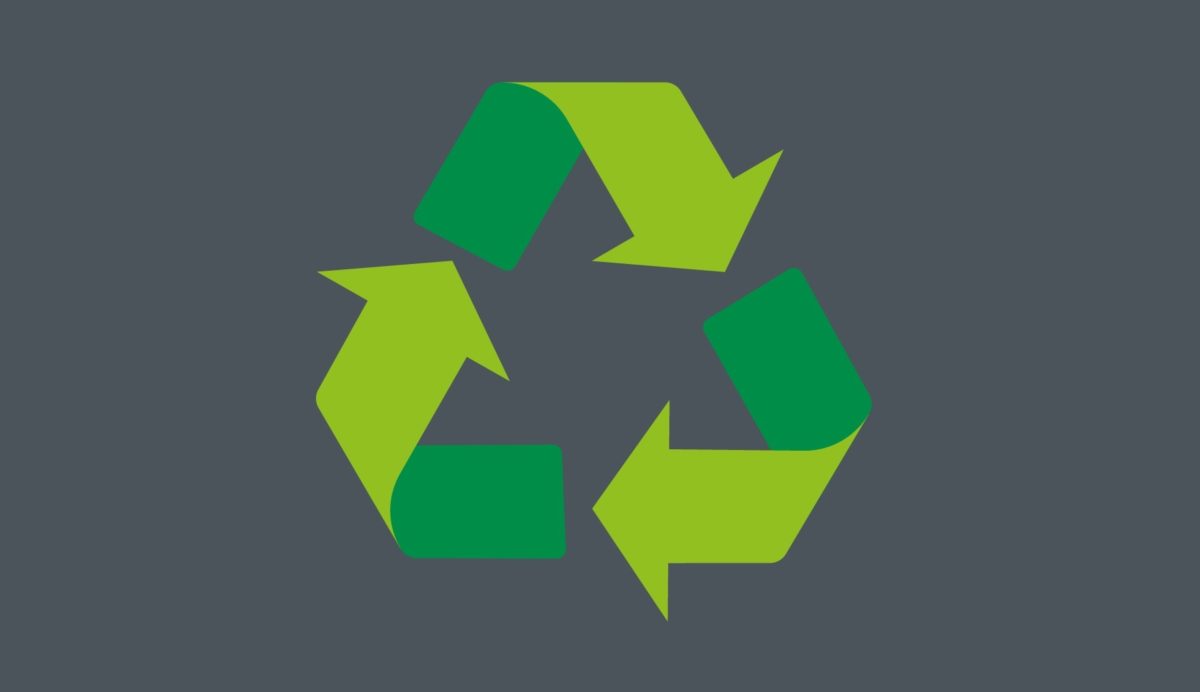Dr Lucy O'Shea is Senior Lecturer in Economics at the University of Bath's Department of Economics
At first glance, recycling figures in this country seem overwhelmingly positive; the recycling rate for UK household waste, for example, has increased from 0.8% in the 1980s to 43.9% in 2015.[1] The figure steadily rose until 2011, but has since levelled off – and the 2015 figure is now 0.9% lower than it was in 2014 (Defra, 2017).
This apparently meteoric rise masks a considerable variation in recycling across different UK local authorities. The recycling rate can vary from 15% to 67% by area (Defra, 2017), and this variation has been persistent over time.
In a 2011 study, my colleagues – Dr Shasikanta Nandeibam (University of Bath) and Professor Andrew Abbott (University of Hull) – and I identified a key factor responsible for the dramatic rise in recycling: the introduction and expansion of kerbside recycling (Abbott et al., 2011). We therefore set about trying to explain the reasons for regional variation in recycling by looking at aspects of kerbside collection and socioeconomic characteristics. We found that differences in the frequency of collections, types and sizes of containers and population density go some way to explaining the variation in household recycling rates. In a further paper (Abbott et al., 2013) we found evidence for the existence of a social norm for recycling. In that paper we categorised the reference group along different dimensions: age, education, income, ethnicity and proximity. We were able to demonstrate a social norm effect, showing that recycling habits were influenced by age, ethnicity and proximity to other recyclers. This effect is also present in Defra’s 2017 Digest of Waste Statistics (Defra 2017), where local authorities close to each other have a tendency to have similar recycling rates. Thus, despite a dramatic improvement in overall household recycling performance, there are some aspects of recycling that have remained persistent over time.
Prior to kerbside recycling, the main outlets for recycling were recycling centres and ‘bring sites’. Bring sites cover dedicated containers usually located in supermarket car parks, whereas recycling centres receive a variety of waste and recycling and cover much larger areas. By providing kerbside collections, the local authorities increase the convenience of recycling – and there is a consensus that by increasing the convenience of recycling behaviour, individuals are more likely to engage in it (e.g. see Ando and Gosselin, 2005, Saphores et al., 2012).[2] However, the question that arises is whether the increase in recycling at the kerbside has occurred at the expense of recycling through other outlets such as recycling centres and bring sites. On the one hand, if (as has been the case) waste arising from households has been fairly stable, the physical limit on the amount that can be recycled is relatively fixed.[3] On the other hand, increased opportunities to recycle may act as a spur to further recycling as households become more aware of what can be recycled and develop the recycling habit.
The policy question that arises, therefore, is whether kerbside recycling has been as successful in driving up recycling rates as at first appears. If households merely switch to kerbside from other recycling outlets, then the impact on recycling behaviour is less positive than if households continue to use previously available recycling methods as well.[4]
This question gains added importance when the current stalling in the overall recycling rate is considered. The target for household recycling is 50% by 2020. We already observe that securing gains above 40% is becoming increasingly difficult; thus, local authorities have to think carefully about what activities will contribute most to closing the gap between current recycling levels and the EU target of 50%. In contributing to this question, my colleagues and I have recently published a new study asking the question of how households view different policy instruments, such as kerbside recycling and recycling centres, provided by the government to encourage them to recycle. Do they view them as complementary or as substitutes for each other? The more households view kerbside as a substitute for going to the recycling centre to recycle their paper, card, plastic etc., the less successful kerbside collections will be in securing additional gains in recycling performance towards the 50% target. Although the focus of this research is on policy instruments related to recycling, there is a wider message: regardless of the domain of policy, potential trade-offs between policies should be explicitly considered, as new interventions can offset the contribution of pre-existing measures.
We can look at the policy question in more detail. In our new paper we show that the decision to recycle at the kerb and/or at the recycling centre will depend on the time saved in doing so. Characteristics of the kerbside collection scheme can affect this time saving, such as frequency of collection, number of materials collected and size of containers. Factors that determine the time taken to bring material to the recycling centres will include distance to the recycling centre. Thus, local government decisions regarding the provision of kerbside and siting of recycling centres will affect the time taken to carry out recycling using different outlets and hence the interaction between them. The general conclusions that emerge from the study are that there is a trade-off when it comes to green recycling (compost waste) but that there is no trade-off when we consider dry recycling (paper, card, glass, aluminium, plastic). Thus, improving access to kerbside collection, providing larger receptacles or arranging more frequent recycling collections can benefit kerbside recycling of dry materials without any measurable loss in returns of dry materials to recycling centres. If we relate back to our earlier discussion of the reasons why such a trade-off might exist then, in the case of green recycling, we deduce that the nature of the activity – occurring infrequently and at specific times, together with relatively fixed nature of the production of such waste – means that households view recycling at the kerbside or at the recycling centre as substitutes for each other. On the other hand, we find that households view dry recycling differently, and the two methods of recycling are seen as complementary – with enhanced kerbside provision promoting recycling at the kerb while not significantly reducing recycling at the recycling centre.
It should be noted that our findings for the UK differ to those found in other contexts. For example, Beatty et al., (2007) find that there is a trade-off between beverage can (glass and plastics) recycling at the kerbside and at the recycling centre, although not for aluminium. Their study, which is based on Californian data, is set against the backdrop of a deposit-refund scheme; such monetary schemes are as yet not permitted in the UK. Although it is difficult to draw conclusions from the difference in the findings as the two studies differ in many respects, the trade-off in the Beatty study occurs for those materials that are heavier. Thus, the convenience of recycling heavier materials at the kerb offsets the loss in the refund which is redeemable at the recycling centre. If a similar deposit refund scheme were to be introduced in the UK it would appear at first glance not to substantially change our results.
This blog post is based on a recent paper published by Dr Lucy O'Shea and her colleagues Dr Shasikanta Nandeibam (University of Bath) and Professor Andrew Abbott (University of Hull).
Footnotes
[1] It should be noted that the definition has changed from ‘household waste’ to ‘waste from household’ in 2014. The latter is a slightly narrower category which excludes street waste.
[2] https://challenges.openideo.com/challenge/recycle-challenge/ideas/make-recycling-more-convenient (Accessed 5/5/2017).
[3] This assumes that the composition of consumption and technical aspects related to packaging and the capacity of local authorities to recycle these remains the same.
[4] There may be other benefits from kerbside recycling in terms of time saved by households by recycling at the kerb as well as fuel savings and avoided pollution that arise by replacing many individual trips to the recycling centre with local authority/private contractor collection and disposal.
References
Ando, A.W., Gosselin, A.Y., 2005. Recycling in multifamily dwellings: does convenience matter? Economic Inquiry 43, 426-438.
Beatty, T.K.M., Berck, P., Shimshack, J.P., 2007. Curbside recycling in the presence of alternatives. Economic Inquiry 45, 739-755.
Defra 2017. Digest of Waste Statistics, March 2017 Edition.
Saphores, J.D.M., Ogunseitan, O.A., Shapiro, A.A., 2012. Willingness to engage in a pro-environmental behaviour: an analysis of e-waste recycling based on a national survey of US households, Resources Conservation and Recycling 60, 49-63.
Responses





In this area as recycling was rolled out across the district, bring sites were removed. It was considered that the advantages of not having to take recycling and deposit it was vastly outweighed by weekly kerbside collection. Also it was an advantage for Unitary Authorities to deal with collection and disposal. Districts and Counties still separate these two functions. Next logical steps are to reduce packaging, especially what cannot be recycled and not to collect waste if it contains recycled materials.